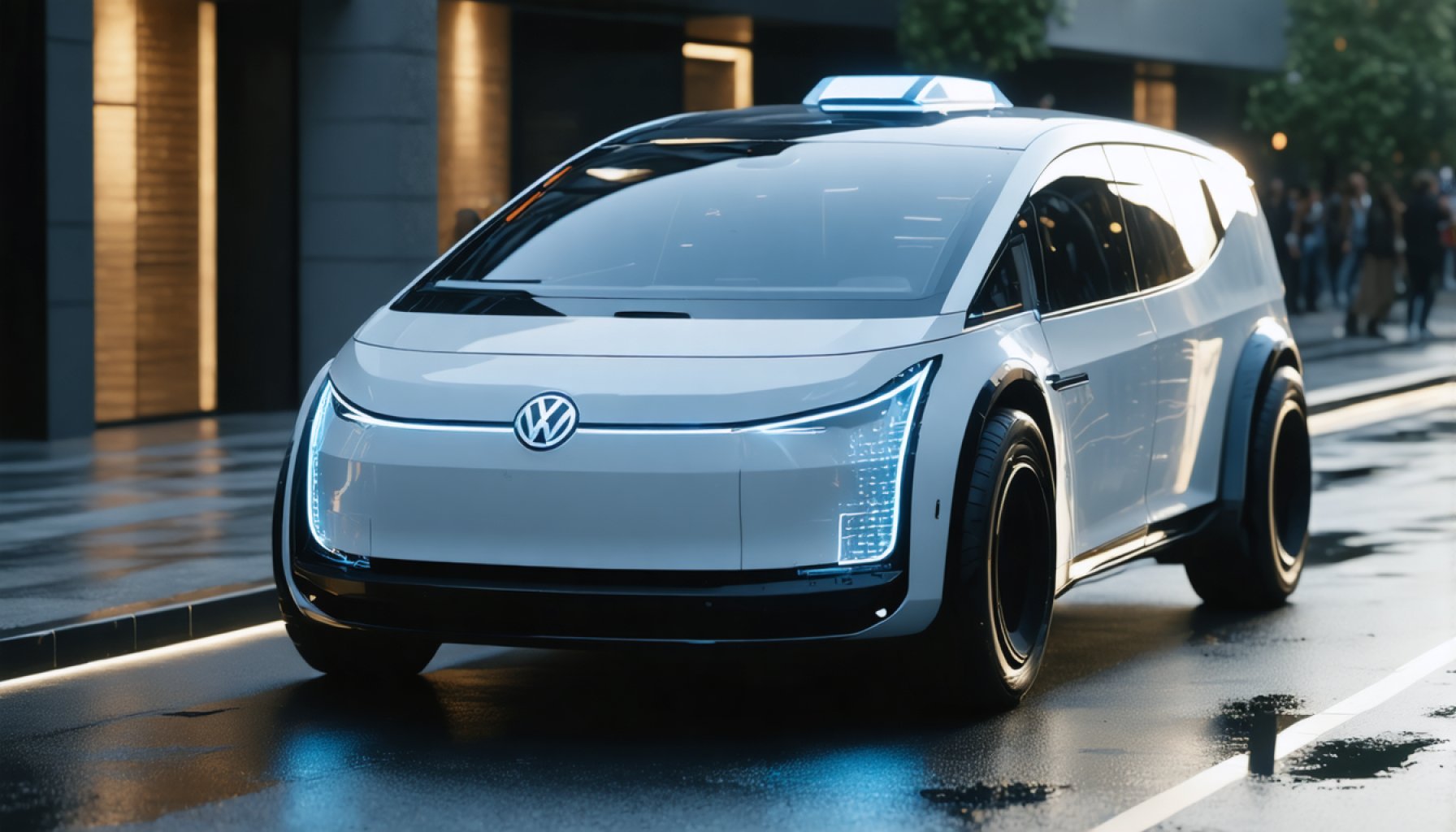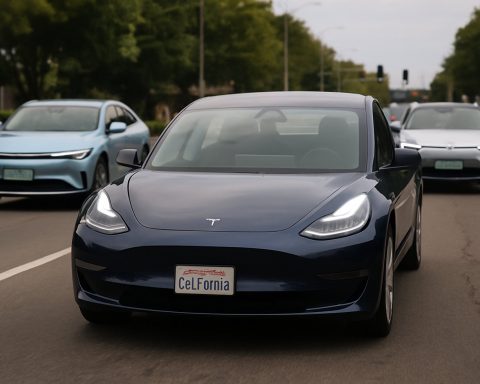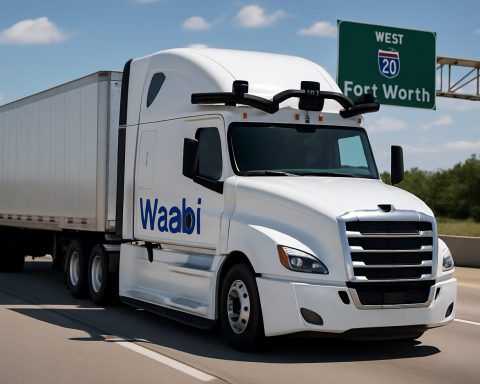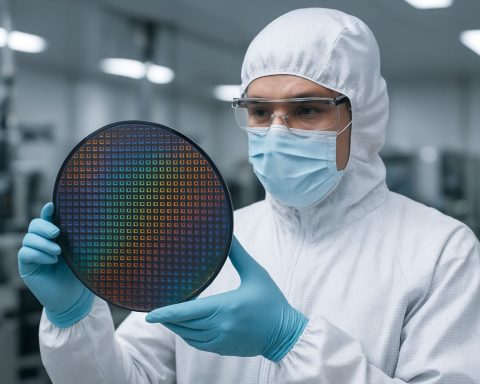- Uber and Volkswagen Group of America are collaborating on autonomous, all-electric “ID. Buzz” vans, starting in Los Angeles in 2026.
- This partnership highlights Uber’s shift from in-house autonomous vehicle research to building strategic alliances.
- Uber is collaborating with Waymo in Phoenix, Austin, and soon Atlanta, demonstrating its strategy to enhance service diversity through partnerships.
- Uber’s market strategy has resulted in a 25% stock increase this year, defying broader market trends.
- Analysts view Uber as potentially “countercyclical,” suggesting it might outperform even in economic downturns.
- Uber partners globally, using cutting-edge technology from Nvidia and collaborating with developers like WeRide in Abu Dhabi.
- The narrative of Uber underscores adaptability and strategic innovation in autonomous mobility.
In a groundbreaking move that has investors buzzing, Uber and Volkswagen Group of America have joined forces to drive their futuristic vision into reality. This unexpected alliance marks a new chapter in the journey toward autonomous transportation. The idea of hailing a ride without a human driver is inching closer, as the two industry giants announced a plan to roll out thousands of all-electric, autonomous “ID. Buzz” vans in major U.S. cities within the next decade.
Starting in the sprawling cityscape of Los Angeles in 2026, these sleek robovans will initially require human oversight to fine-tune the technology. Yet, the message is clear: Uber is setting the stage for a driverless future, with advanced support from Volkswagen’s MOIA division, which will provide the operational backbone for this ambitious fleet.
Uber’s strategy stands out as a masterclass in adaptability. After selling its autonomous vehicle research division years ago, the company focused its efforts on building partnerships rather than competing head-to-head with the likes of Waymo and Tesla. This shift has paid off. In Phoenix and Austin, Uber is already working with Waymo, and there’s anticipation for their imminent partnership rollout in Atlanta. These strategic moves showcase Uber’s relentless pursuit of leveraging alliances to pave its way to autonomy.
The market has taken notice. Uber’s stock has climbed 25% this year, defying a broader market downturn. This resurgence is not merely driven by promise but by strategic prowess. Uber has deftly maneuvered past market jitters that other robotaxi developers could overshadow its services by fostering collaborations that enhance its platform’s diversity and reach.
While skeptics once questioned Uber’s commitment to autonomous innovation, doubting if it might fade in the face of powerhouses like Google and Tesla, the recent surge in investor confidence tells a different story. Analysts now ponder whether Uber might weather an economic downturn better than most—a rare trait termed “countercyclical” in financial parlance.
The journey, however, is far from complete. Uber continues to partner globally, enhancing its capabilities by tapping into Nvidia’s cutting-edge technology and collaborating with innovative autonomous vehicle developers like WeRide in Abu Dhabi. With first quarter earnings looming, all eyes remain on Uber as it strides forward in this high-stakes race for autonomy.
Uber’s story is one of resilience, strategic agility, and foresight. It underscores a pivotal takeaway: adapting to change, rather than resisting it, truly fuels progress. As Uber ominously hints at a driverless horizon, one thing is clear—the future of urban mobility, co-piloted by the likes of Uber and Volkswagen, promises to be both electrifying and transformative.
Uber and Volkswagen’s Autonomous Alliance: A Game Changer for Urban Mobility
Key Insights into Uber and Volkswagen’s Autonomous Vehicle Collaboration
Uber’s recent partnership with Volkswagen Group of America signifies a strategic transformation in the autonomous vehicle industry. This collaboration aims to deploy thousands of all-electric, autonomous “ID. Buzz” vans across major U.S. cities, starting with Los Angeles in 2026. Here, we’ll explore critical insights, potential challenges, and industry implications of this groundbreaking initiative.
Key Features and Specifications
– Vehicle Model: Volkswagen’s “ID. Buzz” vans will be fully electric and equipped with autonomous driving technologies.
– Deployment Timeline: The initial rollout in Los Angeles is planned for 2026, with subsequent expansions to other major cities over the next decade.
– Technology Oversight: Initially, these vehicles will require human oversight to ensure operational safety and technology optimization.
Real-World Use Cases and Benefits
– Increased Accessibility: Autonomous vehicles can provide greater access to transportation for those unable to drive.
– Reduced Pollution: All-electric fleets aim to reduce urban air pollution and contribute to global sustainability goals.
– Traffic Efficiency: By leveraging advanced navigation and coordination systems, these autonomous vans can enhance traffic flow and reduce congestion.
Market Forecasts and Industry Trends
– Autonomous Vehicle Market Growth: According to Allied Market Research, the global autonomous vehicle market size is expected to reach $556.67 billion by 2026, growing at a CAGR of 39.47% from 2019 to 2026.
– Collaborative Partnerships: The trend of strategic partnerships, like Uber’s collaboration with Waymo, indicates a shift from developing in-house technology to leveraging external innovations.
Pros and Cons Overview
Pros:
– Technological Leadership: Uber solidifies its position as a leader in urban mobility by leveraging Volkswagen’s automotive expertise.
– Cost-Efficiency: Collaborations reduce R&D expenses while accelerating technological advancements.
– Adaptability: Uber’s strategy showcases resilience by adapting to market shifts rather than direct competition with industry giants.
Cons:
– Regulatory Hurdles: Regulatory approval remains a significant challenge for widespread autonomous vehicle deployment.
– Technological Dependability: Early-stage technology often requires extensive fine-tuning and poses the risk of operational hiccups.
– Public Skepticism: Trust in autonomous systems needs further development before mass adoption.
Security & Sustainability
– Cybersecurity Measures: Comprehensive cybersecurity strategies will be crucial to protect autonomous systems from potential threats.
– Sustainable Practices: By integrating all-electric vehicles, this initiative supports a sustainable future and aligns with environmental goals.
Insights & Predictions
– Industry Disruption: The collaboration is likely to accelerate industry disruptions, pushing competitors to advance their autonomous vehicle programs.
– Economic Implications: Uber may better withstand economic downturns due to its strategic alliances and adaptability.
– Job Market Impact: While creating new opportunities in tech and maintenance sectors, the shift towards autonomy may impact traditional driver roles.
Actionable Recommendations
– Stay Informed: Keep an eye on developments in autonomous technology and major market players like Uber and Volkswagen.
– Explore Investment Opportunities: Consider investing in companies leading technological innovations in urban mobility and automation.
– Adapt to Tech Shifts: Businesses and individuals should prepare for the inevitable integration of autonomous systems into daily life, focusing on upskilling and adaptation.
For more information on Uber’s strategic initiatives and innovations, visit Uber. You can also explore Volkswagen’s electrification goals and automotive innovations at Volkswagen.












